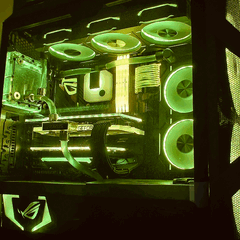What are the advantages of using an optical audio port?
Optical output means the audio chip sends the uncompressed digital audio over the optical cable to a receiver which may or may not have better DACs (digital to analogue converters) to convert the digital signal to analogue one, then amplify the signal to speakers or headphones.
Basically, instead of using the DACs built into the chip (or separate DACs on the motherboard), you may be able to get better conversion inside a device further away from your computer. The inside of the computer can be noisy, with electric noise radiated by the cpu and video card VRMs into the air and through the motherboard, and that in theory can affect the sound quality.
5.1 can be sent over one single optical cable, but depending on standard, it may be compressed 5.1, so a bit lossy.
USB is also digital, the digital sound generated and mixed by Windows is sent to the usb sound card driver which sends it in lossless format to the usb controller at the other end of the usb cable. The controller then uses DACs and amplifiers to produce sound.
So same concept as optical out to a audio device.... but with usb, due to how data is formatted in data packets and sent in a specific way through the usb cable, there is potential of having some jitter, but in practice it's not an issue, and even if it would occur you wouldn't notice it.


.png.255947720031a641abdac78e663b681c.png)

















Create an account or sign in to comment
You need to be a member in order to leave a comment
Create an account
Sign up for a new account in our community. It's easy!
Register a new accountSign in
Already have an account? Sign in here.
Sign In Now